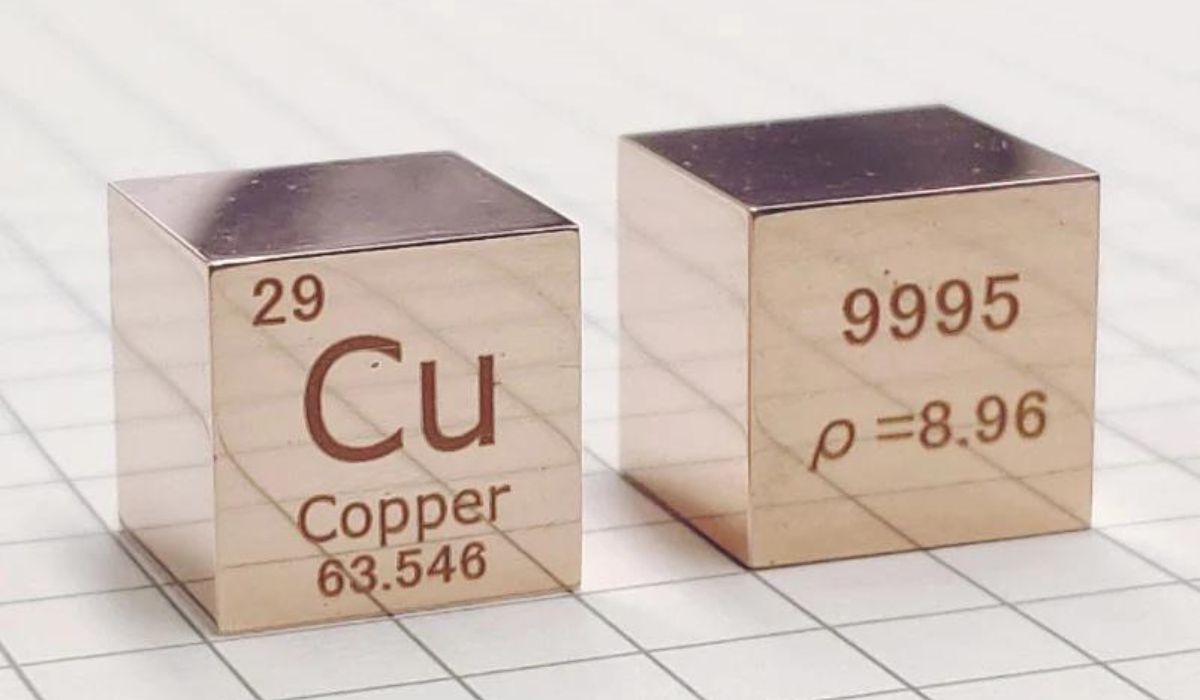Copper’s historical significance cannot be overstated because of the metal’s adaptability and durability. Copper’s distinctive qualities have made metal indispensable in a wide range of sectors, from those used by ancient civilizations to those used by modern technological advances. Copper’s density is one of its defining characteristics. Here, we’ll investigate what density is and why copper is so much denser than other metals we’ve encountered.
Understanding Density
Density, which is the mass of an item expressed as a fraction of its volume, is one of the most basic properties of matter. It’s a straightforward way to evaluate the density of a substance within a specific volume. The density formula is as follows:
Specifically: Density () = Mass (m) Volume (V).
Density is measured in either grams per cubic centimeter (g/cm3) or pounds per cubic inch (lb/in3), depending on the metric or imperial system being used.
Copper’s Density: An Impressive Figure
Copper is unique among several common metals because of its high density. The density of copper at standard room temperature is around 8.96 g/cm3 (0.323 lb/in3). A pure copper cube with just one centimeter on each side will therefore weigh close to 9 grams. Copper has a high density for an elemental metal, despite its small atomic size.
The Atomic Structure of Copper
Copper’s atomic structure must be studied in detail if its extraordinary density is to be understood. Copper, with its 29 protons and 29 electrons, is classified as a transition metal. A metallic lattice formed by a thick cloud of electrons surrounding each copper atom. The metal’s density benefits from the atoms’ close proximity to one another.
Factors Influencing Copper’s Density
The density of copper is affected by a number of things. The isotopic makeup of the substance is important. Copper has two stable isotopes that coexist in nature: copper-63 and copper-65. The density of a sample of copper can be altered by manipulating the ratio of its various isotopes.
Additionally, copper’s density can be marginally impacted by the presence of impurities. The density of copper alloys, such as bronze and brass, can change based on the proportions of the various metals used in the alloy.
Applications of Copper’s Density
Due to its versatility and high density, copper is used in a wide range of commercial settings.
- Electrical Conductivity: Copper’s high electrical conductivity and low weight make it the material of choice for electrical wiring and cabling. Copper wires provide for effective power transmission because of the metal’s low resistance to the passage of energy.
- Heat Transfer: Copper’s high density and low thermal resistance make it a prime material for use in heat exchangers and other forms of thermal management. Industries relying on rapid heat transfer and dissipation, such as air conditioning, refrigeration, and electronics, depend on it heavily.
- Coinage: Copper’s density and durability have made it a favored material for coins and currencies throughout history. To reduce costs, copper is no longer utilized exclusively in the manufacturing of coins, but copper alloys are still widely used.
- Construction and Architecture: Copper is widely used in construction and architecture because to its durability and low susceptibility to corrosion. The aesthetic value of copper is another reason for its widespread use in decorative contexts.
Conclusion
Copper’s density, an important marker of the element’s one-of-a-kind atomic structure, exemplifies its extraordinary properties. Copper is one of the densest elemental metals, with a density of 8.96 g/cm3. Copper’s extraordinary ability to conduct heat and electricity has made it a vital component in many fields, from electronics to building construction. Copper’s role in molding our planet will remain significant as technology advances, making it one of the most important metals ever discovered.











